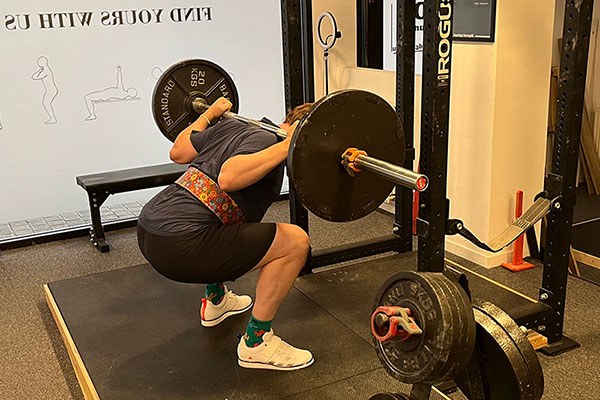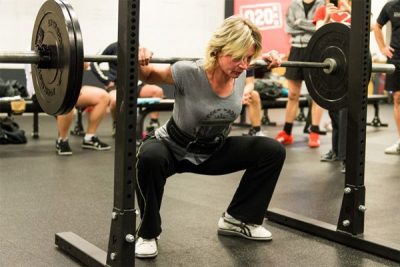
The Back Angle in the Squat
by Steve Ross, SSC | October 01, 2024
The squat is the most technically demanding lift to coach and
execute, and I suspect that’s why most personal trainers skip out
on learning how to do it. As a large, compound, multi-joint exercise,
it recruits a whole bunch of muscle mass, over a long range of
motion, creating numerous opportunities for things to go wrong. As
the weight increases, the margin for error shrinks, meaning even the
slightest deviation from correct technique will result in a missed
rep.
A common error that we
see involves a misunderstanding of how to establish our desired, more
horizontal back angle. When training for strength, this back angle
utilizes more effectively the muscles of the posterior chain, namely,
the lower back, glutes, hamstrings, and adductors, which adds to the
muscle mass involved in the movement and makes it our preferred way
to teach the squat. This allows us to lift heavier weights and become
stronger, which is the reason we’re training for strength in the
first place.
This back angle is
achieved by reaching the hips back and pushing the knees out and
forward at the same time. When executed correctly, this angle is set
almost immediately and prepares the lifter for the rebound at the
bottom of the squat. When people have difficulty understanding how to
do this – often due to an incorrect mental image of the squat –
we’ll often use cues like “bend over” or “point your nipples
to the floor.” However, this can lead to them to mistakenly
rounding or flexing their thoracic spine in attempt to point their
chest down.
It’s important to
remember that the back serves to transmit the force generated by the
hips and legs up to the barbell sitting on the back, and any flexion
in either the lumbar or thoracic spine during the squat will cause
problems. More specifically for this article, when the chest
collapses forward while trying to lean over, the muscles of the upper
back and shoulders (where the barbell rests) flatten and the elbows
flare back causing the bar to roll upward toward the neck. Not only
is this position potentially dangerous, it also kills the mechanics
of the lift by having the bar drift forward of mid-foot and will,
eventually, piss off the elbows something fierce. It also deforms and
softens a segment which is meant to remain rigid at all times during
the movement pattern.
Mental images of the
squat (think the Master Cue) are extremely useful and in this
case, a great way to fix this issue is to think about freezing the
torso throughout the movement. The thoracic spine should stay tight,
and the lumbar spine should remain in rigid extension at all times
and both should not move. While the torso will lean forward naturally
as the hips move back and the knees drive outward, the key is that
the torso itself is not actively bending. It it frozen in
position while the hips reach back and the knees are shoved out and
forward.
Thinking about
everything from the waist up, including the arms and hands being
frozen in place during the squat will solve a lot of problems and
make for a more efficient movement pattern. You squat by moving your
hips and knees together, not by relaxing your back.


Take note of the images above. In the first squat (center photo), the lifter attempts to
establish the back angle by rounding his thoracic spine, which
naturally flares the elbows back and deforms the back segment. In
contrast, in the bottom photo, the lifter maintains the same torso
and elbow position at the bottom as he had at the top, with the
only change being the position established by moving hips and knees
simultaneously. While in both bottom-position photos, the chest has effectively been
“pointed down,” this has been accomplished in two very different
ways.
Remember, the forearms
help anchor the barbell in place just below the spine of the scapula,
and the back must remain rigid to successfully do its job as a force
transmitter. As long as these elements stay stable throughout the
squat, the lifter will be well-positioned for success.






